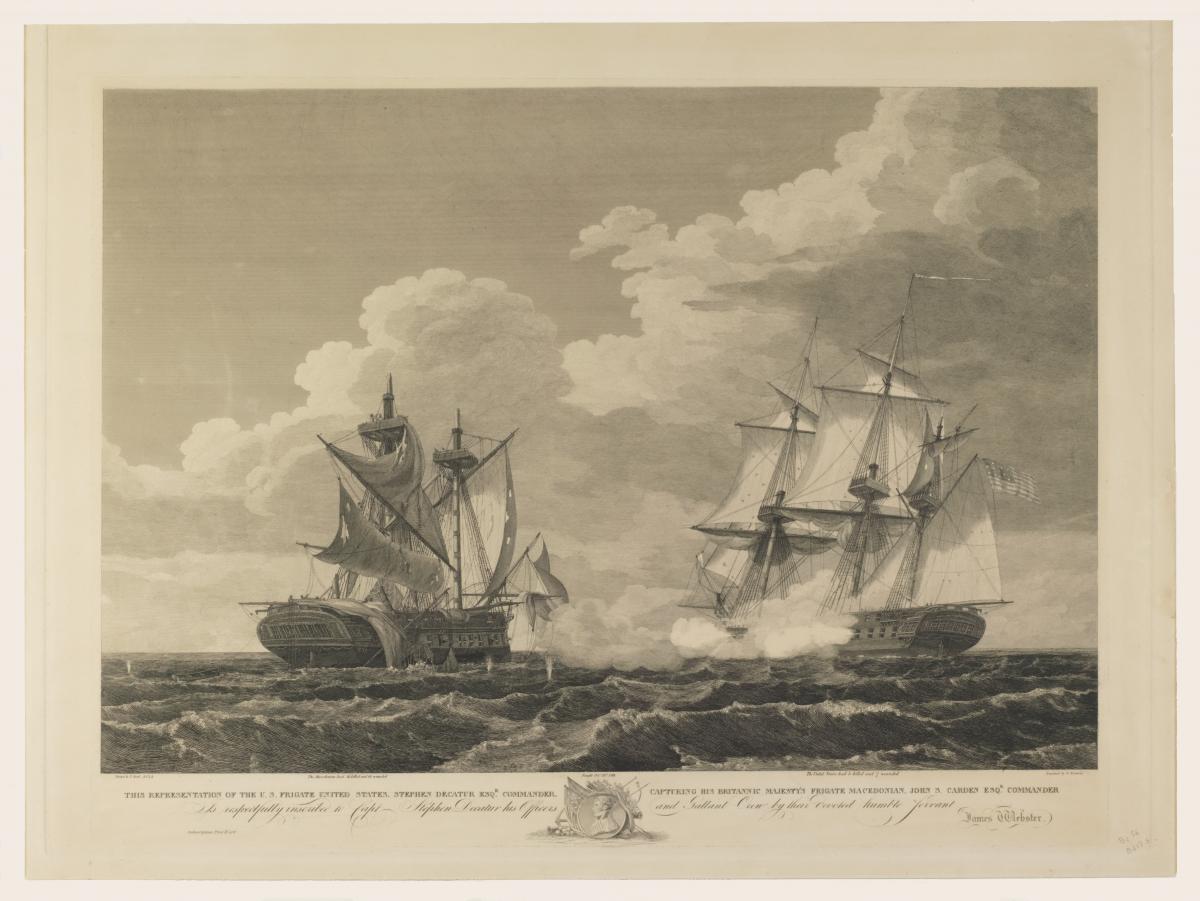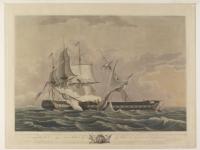*This blog is the fourth in a series by Sarah Sharp, Global Educator for World Heritage Philadelphia.
Philadelphia continued in its role as a major city in the new United States after the Revolution and its international connections deepened during the era of the War of 1812 (Campbell, War-of-1812). A look at the lives of three individuals whose lives were affected by the War -- Thomas Cope, Joshua Humphreys, and Joel Barlow Sutherland -- give us new insights into the history of Philadelphia during this period that may surprise us and our students.
Beyond the historical details, their activities enable us to ask questions about how war has involved modern Philadelphians and the city as well.
The first decades of the 1800s show us major features of Philadelphia’s global connections. On the one hand, diplomatic relationships with other countries affected American coastal and international shipping and trading activities, much of which was centered in and around Philadelphia. The rise in hostilities between the United States and Great Britain affected these activities, in part due to the 1807 embargo and the 1809 Non-Intercourse Act which followed (Weigley, Philadelphia: A 300 Year History). Of course, since moving goods internationally through water transport was the only option, unlike today, these interruptions take on a deeper meaning (Dorwart, Shipbuilding and Shipyards). On the other hand, some of the social attitudes and economic conditions in Philadelphia that had developed independently had international dimensions. The city’s industrial growth and residential landscape were in transition phases during this time as specialized manufacturing districts took shape and native-born and immigrant populations with more modest incomes stayed in the City’s core, while wealthier people moved to the emerging suburban neighborhoods (Laurie, Working People of Philadelphia, 1800-1850). Finally, Federalist and Democratic-Republican loyalties shifted in revealing ways due to the War’s developments (Madonna, The Lancaster Federalists and the War of 1812).
The first individual, Thomas P. Cope (1768-1854), is best known as a wealthy Quaker shipowner and merchant who involved himself broadly in Philadelphia’s business and philanthropic associations. Thanks to the discovery of his detailed diary - over 1000 handwritten pages, covering the 1800-1851 period (Philadelphia Merchant : The Diary of Thomas P. Cope, 1800-1851), we are able to read Cope’s reactions to many major events that affected his city. In his entries penned in July 1812, for example, we listen to him complain about the uncertainty of his ships and their cargoes travelling across the Atlantic and in the Caribbean regions. They risked possible capture since Congress had declared war on Great Britain in June. Cope and his fellow Philadelphian merchants had already suffered losses during the federal 1807 embargo and the 1809 Non-Intercourse Act.
Cope’s accounts enable us to raise questions about the common practice of privateering when privately owned and outfitted warships operated under governmental contracts to seize both ships and their cargoes (Wayman, Privateering). Numerous privateering operations sailed in and out of Philadelphia during the War (Maclay, A History of American Privateers).
- How else were travel, immigration, and shipping disrupted?
- Which Philadelphians benefitted from privateering?
- How were Philadelphians harmed?
- How have modern wars interfered with trade and travel in and out of Philadelphia?
Beyond the general concern over shipping and travel, some Philadelphians were quite actively involved in national developments at the highest level. Our second individual, Joshua Humphreys (Joshua Humphreys papers), was a naval architect born in Haverford, Pennsylvania, and he used his skills to design changes in American merchant ships to enabled them to be used as military vessels. During the War of 1812, some national politicians sought Humphreys’ advice about several matters. For example, Adam Seybert, a Democratic-Republican member of Congress at the time from Philadelphia, sent Humphreys letters asking what to do about interruptions in availability of materials, such as copper, sail duck, and hemp required to build and maintain American ships. Seybert also wanted to learn Humphreys’ opinion about the ongoing federal debate over Congress’s creation of a permanent navy (for more, click here). Commodore William Phillip Bainbridge, a major American naval leader during the War, contacted Humphreys with a question about the best type of wharf to be built with war progress in mind. We need to keep in mind by the early 1800s, Philadelphia’s maritime history extended back at least 150 years, so all matters related to shipping and production for shipping had many domestic and international connections.
Humphreys’ career and contacts add to this particular chapter and enable us to raise new questions about the development of the Philadelphia Navy Yard and the City’s role in the establishment of the American navy. Knowing that Seybert was a Democratic-Republican member of the US House of Representatives from Philadelphia enables us to wonder about how his views fit within state and local Federalist and Democratic-Republican clashes over support for the war.
- How has Philadelphia’s support in Congress varied for military actions in our own time? In national debates over war participation?
- How do the City’s populations contribute to current international military activity?
- How does the City’s economic structure support national military involvement in production or service activities?
As the War of 1812 came to a close, other important matters emerged, including the position of veterans. Within the decade that followed, the U.S. Navy that had only really developed during the War, began to make arrangements for sailors who had been disabled during the conflict (Kodosky, Veterans and Veterans Organizations). Eventually the Navy ordered the construction of the first national facility of this kind. Joel Barlow Sutherland (1792-1861), a physician during the War and later founder of Jefferson Medical College in Philadelphia, helped veterans’ claims during his time in Congress (Sutherland, A Memoir of the Life and Services of Joel Barlow Sutherland: First President of the Society of the War of 1812).
- What questions can students investigate regarding Philadelphia veterans of modern wars?
- How has the federal government assisted Philadelphia veterans in the past? How is the federal government assisting them now? Who is advocating in Congress for them now? What are the issues?
- Do the students know any veterans to conduct oral history interviews with to hear reminiscences?
Undoubtedly, both teachers and students are familiar with “The Star-Spangled Banner”, but not necessarily with its connection to the War of 1812 (The Star Spangled Banner; written during the bombardment of Fort McHenry). What a topic worth exploring -- especially because of this important song’s origin nearby at Fort McHenry, Maryland and demonstration of American patriotism in wartime!
To learn more about the War of 1812, particularly about how its issues related to Philadelphia and its international connections in the early 1800s, show us just how rich the City’s history really is.

